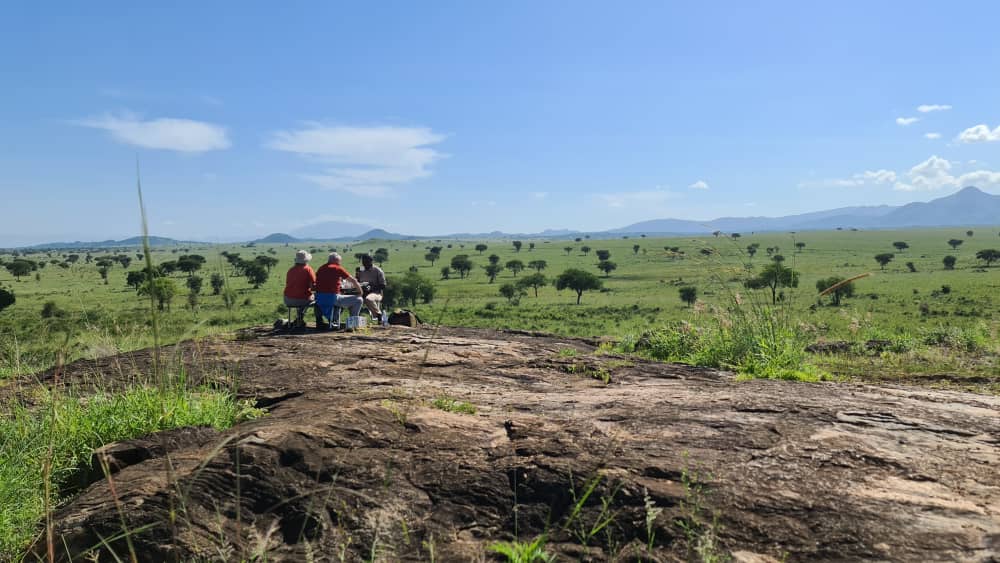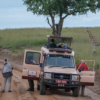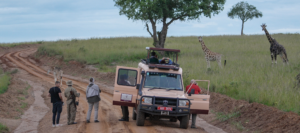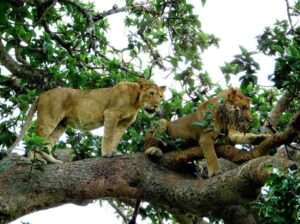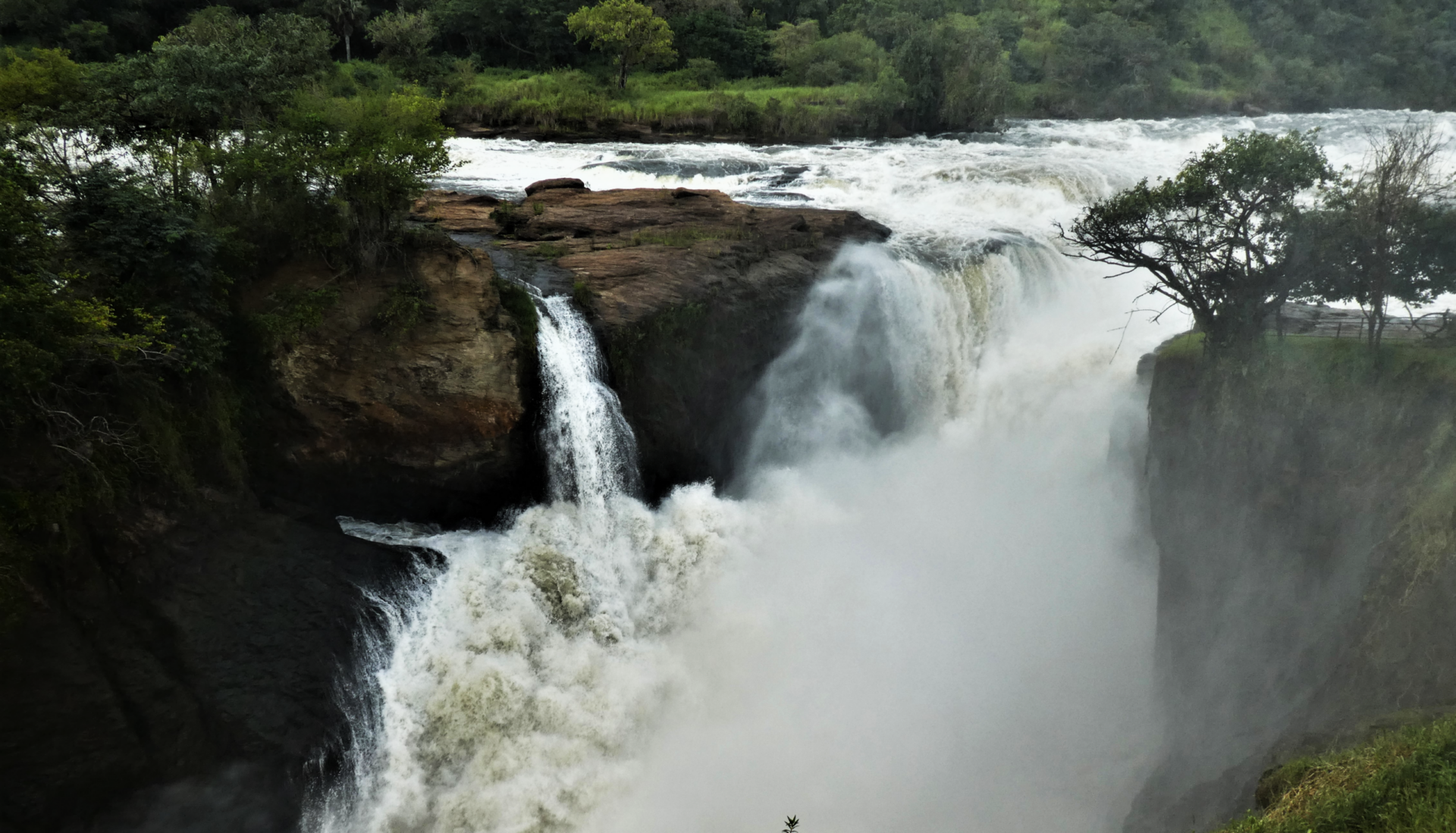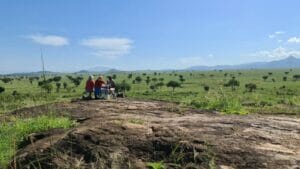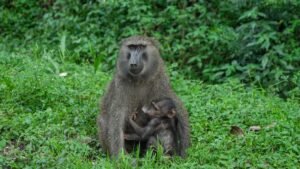Nestled in the remote corners of northeastern Uganda lies a hidden gem waiting to be explored – Kidepo Valley National Park.
This untouched wilderness, often dubbed as Africa’s hidden Eden, is a sanctuary for a diverse array of wildlife and a haven for nature enthusiasts seeking an authentic Uganda safari experience. Join us on an exhilarating journey as we delve into the ultimate guide to Kidepo Valley National Park, uncovering its unique wildlife, captivating landscapes, and tips for planning an unforgettable adventure in this off-the-beaten-path destination.
Discovering Kidepo Valley National Park
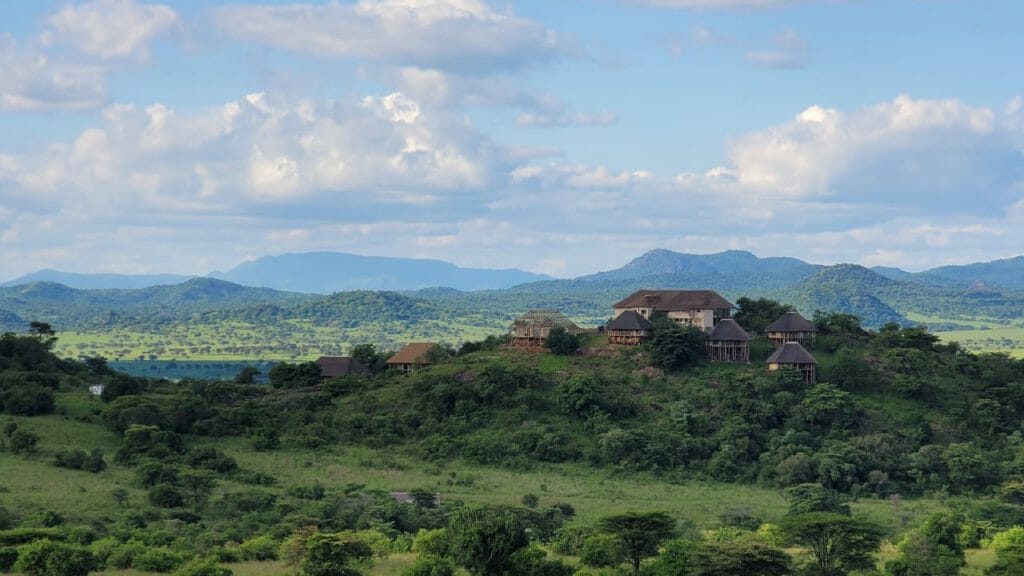
Kidepo Valley National Park, located in the northeastern region of Uganda, is a hidden treasure waiting to be discovered by adventurous travelers. This remote and untouched park covers an expansive area of 1,442 square kilometers, offering a truly immersive and off-the-beaten-path safari experience.
Location and Access
Kidepo Valley National Park is situated in the Karamoja region, near the borders of South Sudan and Kenya. Despite its remote location, the park is accessible by both road and air.
By Road: The park can be reached by a scenic drive from Kampala, the capital city of Uganda, which takes approximately 10-12 hours. Alternatively, you can hire a 4×4 vehicle and embark on a thrilling self-drive adventure.
By Air: For a quicker and more convenient option, there are regular domestic flights to Kidepo airstrip from Entebbe International Airport or other regional airports. From the airstrip, it’s a short drive to the park entrance.
The Spectacular Landscape
One of the standout features of Kidepo Valley National Park is its breathtaking landscape, characterized by vast savannah plains, rugged mountains, and deep valleys.
The park is dominated by the majestic Narus Valley in the south and the rugged Kidepo Valley in the north, both offering stunning panoramic views.
Rich Cultural Heritage
In addition to its natural wonders, Kidepo Valley National Park is also home to several indigenous communities, including the Karamojong people.
Interacting with these communities provides a unique opportunity to learn about their traditional way of life, ancient customs, and vibrant cultural practices.
Wildlife Abundance
Kidepo Valley National Park boasts an incredible diversity of wildlife, making it a paradise for wildlife enthusiasts.
The park is home to over 75 mammal species, including the iconic African elephants, herds of buffalos, zebras, giraffes, and various antelope species. Additionally, Kidepo Valley National Park is one of the few places in Uganda where you can spot predators such as lions, leopards, and cheetahs. However, if you’re looking for Uganda’s mountain gorillas, you’ll need to head west!
Off the Beaten Path
Unlike more popular safari destinations in Africa, Kidepo Valley National Park remains relatively untouched by mass tourism. This means you can enjoy a more exclusive and intimate safari experience, with fewer crowds and a sense of being completely immersed in nature’s tranquility.
As you embark on your journey of discovering Kidepo Valley National Park, be prepared to witness the raw beauty of its landscapes, encounter remarkable wildlife, and connect with the captivating cultures that call this extraordinary place home.
Unique Wildlife of Kidepo: From Lions to Bat-eared Foxes
Kidepo Valley National Park is a wildlife enthusiast’s dream come true, offering a remarkable diversity of animal species.
From majestic predators to rare and elusive creatures, the park is home to a rich array of wildlife that will leave you in awe. Get ready to embark on an unforgettable journey as we delve into the unique wildlife of Kidepo Valley National Park.
Lions: The Kings of Kidepo
One of the highlights of visiting Kidepo Valley National Park is the opportunity to spot the majestic African lions.
Known for their regal presence and awe-inspiring roars, these iconic big cats can often be seen lounging in the grasslands or on the prowl in search of their next meal.
Kidepo Valley National Park is renowned for its healthy lion population, providing visitors with incredible opportunities to observe these magnificent creatures in their natural habitat.
Elephants: Gentle Giants of the Savannah
Another prominent resident of Kidepo Valley National Park is the African elephant.
These gentle giants, with their imposing size and graceful demeanor, roam freely across the park’s expansive landscapes.
Watching a herd of elephants as they move together, forage for food, or play in the water is a truly awe-inspiring experience that will leave a lasting impression.
Giraffes: Graceful Giants of the Treetops
Kidepo Valley National Park is also a sanctuary for the graceful and towering giraffes.
These elegant creatures, with their long necks and distinctive patterns, can be spotted gracefully strolling through the savannah or delicately feeding on the leaves of acacia trees. Observing these gentle giants up close is an incredible opportunity to witness the wonders of nature.
Cheetahs: The Speedy Predators
Kidepo Valley National Park is one of the few places in Uganda where you can witness the incredible speed and agility of cheetahs.
These magnificent predators, known for their sleek bodies and distinctive black tear stripes, are highly elusive.
However, with the park’s vast open plains and sparse vegetation, your chances of spotting these lightning-fast hunters are significantly increased.
Bat-eared Foxes: The Rare Nocturnal Residents
One of the unique inhabitants of Kidepo Valley National Park is the bat-eared fox. These small, nocturnal creatures with their distinctive large ears are rarely seen elsewhere in Uganda. Kidepo Valley National Park provides a rare opportunity to catch a glimpse of these elusive and fascinating foxes as they emerge from their burrows during the twilight hours.
Other Species: Buffalos, Zebras, Antelopes, and more
In addition to the iconic animals mentioned above, Kidepo Valley National Park is home to a wide variety of other wildlife species. From herds of buffalos grazing peacefully to zebras galloping across the plains, and from graceful antelopes like the eland and the oribi to the elusive leopards and hyenas, the park offers a rich tapestry of animal life waiting to be discovered.
Exploring the unique wildlife of Kidepo Valley National Park is like stepping into a wildlife documentary. With its diverse range of species and the opportunity to witness rare and extraordinary sightings, a safari in Kidepo Valley National Park promises to be an experience of a lifetime.
Birdwatching in Kidepo: A Remote Birders’ Haven
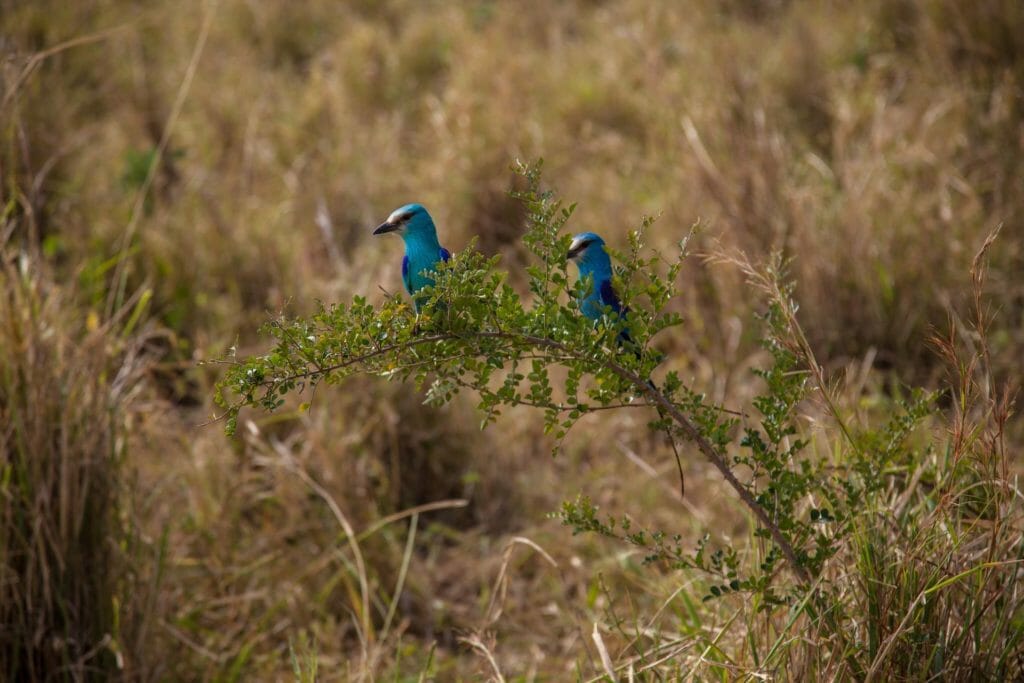
Kidepo Valley National Park is not only a paradise for wildlife enthusiasts but also a haven for birdwatchers.
With its diverse habitats, ranging from savannah plains to rugged mountains, the park attracts a remarkable variety of avian species. Whether you’re a seasoned birder or a novice enthusiast, Kidepo Valley National Park offers a remote and rewarding birdwatching experience like no other.
Rich Avian Diversity
Kidepo Valley National Park boasts a staggering number of bird species, with over 475 recorded to date. These include both resident and migratory birds, making it a year-round birdwatching destination. The park’s diverse habitats provide a wide range of niches and ecosystems, attracting a plethora of birdlife.
Raptors: Majestic Hunters of the Skies
One of the highlights for birdwatchers in Kidepo Valley National Park is the opportunity to observe a variety of raptors. From the powerful African fish eagle and the majestic martial eagle to the agile bateleur and the beautiful pygmy falcon, the park is teeming with these impressive birds of prey. Witnessing their aerial displays and hunting prowess is a sight to behold.
Ostriches: The Largest Birds on Earth
Kidepo Valley National Park is one of the few places in Uganda where you can encounter the magnificent ostriches.
These flightless birds are the largest species of bird on Earth and are known for their incredible speed and distinctive appearance.
Observing these fascinating creatures in their natural habitat is a truly memorable experience.
Endemic and Rare Species
Birdwatchers visiting Kidepo Valley National Park have the opportunity to spot several endemic and rare species. The Karamoja apalis, a critically endangered bird, is found exclusively in the park and its surrounding areas. Other elusive and sought-after species include the white-bellied go-away bird, the fox kestrel, and the golden pipit. Spotting these unique birds requires patience and keen observation skills, but the reward is well worth the effort.
Wetland Birds: A Haven for Waterfowl
Kidepo Valley National Park is home to several wetlands, which serve as important habitats for a variety of waterfowl. From the elegant African jacana and the vibrant malachite kingfisher to the stately grey crowned crane, these wetlands provide a serene and picturesque backdrop for birdwatching. Exploring these areas offers a chance to witness the fascinating behaviors and intricate plumage of wetland birds.
Best Birdwatching Spots
To maximize your birdwatching experience in Kidepo Valley National Park, there are several key spots to explore. The Narus Valley, with its lush vegetation and water sources, attracts a wide range of bird species. The Kidepo River banks, the Kanangorok Hot Springs, and the Apoka Rest Camp are also known for their birdwatching opportunities.
Birdwatching Tips
To make the most of your birdwatching adventure in Kidepo Valley National Park, consider the following tips:
- Bring binoculars and a field guide to help with bird identification.
- Hire a knowledgeable birding guide who can help you locate and identify the various species.
- Be patient and observant, as many birds may be well-camouflaged or hiding in the vegetation.
- Dress in muted colors and avoid making sudden movements or loud noises to avoid startling the birds.
- Take notes or photographs to document your bird sightings and create lasting memories.
Birdwatching in Kidepo Valley National Park is a truly immersive experience, allowing you to connect with the remarkable avian diversity of the region. Whether you’re captivated by the soaring raptors, the vibrant wetland birds, or the elusive endemic species, Kidepo Valley National Park promises a remote and rewarding birding adventure.
Guided Nature Walks and Cultural Visits
Exploring Kidepo Valley National Park goes beyond wildlife sightings and birdwatching. The park offers a range of guided nature walks and cultural visits, allowing visitors to immerse themselves in the natural beauty and cultural heritage of the region. Embark on a journey of discovery as we delve into the opportunities for guided nature walks and cultural visits in Kidepo Valley National Park.
Nature Walks: Exploring the Wilderness on Foot
Guided nature walks provide a unique opportunity to explore the park on foot, allowing you to get up close and personal with the natural wonders that abound. Accompanied by experienced guides, you can venture into the savannah plains, traverse the rugged mountains, and wander through the diverse habitats of Kidepo Valley National Park. These walks offer a chance to appreciate the smaller details of the ecosystem, such as the intricate flora, insect life, and tracks left by animals.
Cultural Visits: Connecting with Indigenous Communities
Kidepo Valley National Park is not only a haven for wildlife but also home to indigenous communities, such as the Karamojong people. Engaging in cultural visits provides a unique opportunity to learn about their traditional way of life, customs, and rich cultural heritage. You can visit local villages, interact with community members, witness traditional dances and ceremonies, and even participate in activities like beading, traditional cooking, or cattle herding. These interactions foster a deeper understanding of the local culture and create memorable cross-cultural experiences.
Community Walks: Experiencing Local Life
In addition to cultural visits, community walks offer a chance to explore the surrounding areas of Kidepo Valley National Park. Accompanied by local guides, you can meander through the nearby villages, observe daily activities, and gain insights into the challenges and opportunities faced by the local communities. These walks not only provide a glimpse into the local way of life but also contribute to the sustainable development of the region by supporting community-based tourism initiatives.
Conservation Education: Learning from Experts
Kidepo Valley National Park is committed to conservation efforts, and as part of your visit, you can engage in conservation education programs.
These programs aim to raise awareness about the importance of wildlife conservation, ecosystem protection, and sustainable tourism practices. Through informative sessions, you can learn about the park’s conservation initiatives, ongoing research projects, and the challenges faced in preserving this unique ecosystem.
Engaging in conservation education programs allows you to contribute to the long-term preservation of Kidepo Valley National Park.
Safety Precautions and Guidelines
When participating in guided nature walks and cultural visits in Kidepo Valley National Park, it’s essential to prioritize safety and respect for the environment and local communities. Some key guidelines to keep in mind include:
- Always follow the instructions of your guides and adhere to park regulations.
- Respect the wildlife and maintain a safe distance from animals.
- Leave the environment as you found it, taking care not to disturb or damage any natural or cultural sites.
- Dress appropriately, considering the weather and cultural sensitivities.
- Carry water, snacks, and any necessary equipment for your walk.
- Be mindful of your impact on the local communities and support responsible and sustainable tourism practices.
Embarking on guided nature walks and cultural visits in Kidepo Valley National Park offers a unique opportunity to connect with the natural and cultural heritage of the region. Whether you choose to explore the wilderness on foot, engage with local communities, or learn about conservation efforts, these experiences will deepen your appreciation for the park and leave a lasting impression.
Scenic Drives and Viewpoints
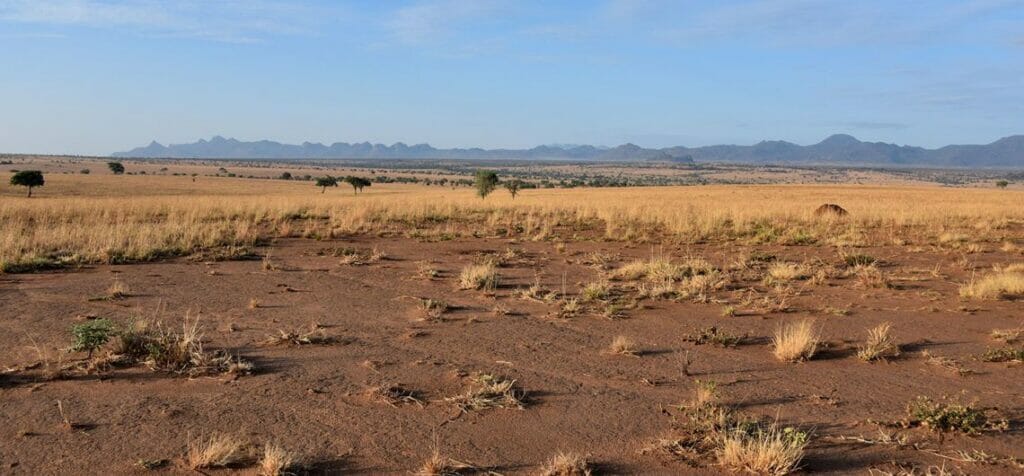
Kidepo Valley National Park is not only a destination to explore on foot but also offers breathtaking scenic drives and viewpoints that allow visitors to take in the awe-inspiring landscapes from the comfort of their vehicles. Hop on board and embark on a journey of stunning vistas and panoramic views as we delve into the scenic drives and viewpoints in Kidepo Valley National Park.
Apoka to Narus Valley Drive
One of the most popular scenic drives in Kidepo Valley National Park is the route from Apoka, the park’s main entrance, to the Narus Valley. This drive takes you through the heart of the park, offering spectacular views of the vast savannah plains, rugged mountains, and the winding Kidepo River. Keep your eyes peeled for wildlife sightings along the way, as the route traverses prime animal habitats.
Kanangorok Hot Springs Drive
For a unique and otherworldly experience, take a scenic drive to the Kanangorok Hot Springs. Located in the far northeastern corner of the park, this drive offers stunning views of the park’s diverse landscapes, including rocky outcrops and the expansive plains. Upon reaching the hot springs, you can take a leisurely walk around the area and soak in the natural beauty while enjoying the soothing warmth of the springs.
Lomej Hills Drive
The Lomej Hills, situated in the southeastern part of Kidepo Valley National Park, provide a vantage point for breathtaking panoramic views. A drive to the Lomej Hills offers a chance to witness the park’s beauty from a higher perspective, with sweeping vistas of the Narus Valley and the surrounding plains. This is an ideal spot for capturing stunning photographs and immersing yourself in the vastness of the park’s landscapes.
Namamukweny Valley Drive
Venture to the western part of Kidepo Valley National Park for a scenic drive through the Namamukweny Valley. As you traverse this picturesque valley, you’ll be treated to stunning views of the Morungole Mountains and the meandering Narus River. The drive offers a sense of tranquility as you soak in the beauty of the surrounding landscapes and appreciate the untouched wilderness of the park.
Kidepo River Valley Drive
Explore the northern region of Kidepo Valley National Park with a drive along the Kidepo River Valley. This drive takes you through lush vegetation, riverine forests, and open grasslands, providing opportunities to spot wildlife such as elephants, giraffes, and various antelope species. The drive offers a different perspective of the park, showcasing the diversity of habitats and the unique ecosystems that thrive along the riverbanks.
Safety and Tips for Scenic Drives
When embarking on scenic drives in Kidepo Valley National Park, it’s important to prioritize safety and abide by park regulations. Here are some tips to enhance your experience:
- Always stay on designated roads and tracks to minimize impact on the environment.
- Observe speed limits and drive cautiously, as wildlife may cross the roads.
- Carry a map and familiarize yourself with the routes and viewpoints beforehand.
- Pack water, snacks, and any necessary supplies for the drive.
- Respect the park’s wildlife and do not disturb or approach animals.
- Bring binoculars and a camera to capture the stunning views and wildlife sightings.
Embarking on the scenic drives and visiting viewpoints in Kidepo Valley National Park allows you to witness the grandeur of the landscapes at your own pace. Whether you’re captivated by the vast savannah plains, rugged mountains, or winding rivers, these drives offer an unforgettable journey through the breathtaking beauty of the park.
Staying in Kidepo: Safari Lodges and Camping
When visiting Kidepo Valley National Park, there are various accommodation options available to suit different preferences and budgets. Whether you prefer the comforts of a safari lodge or the thrill of camping under the stars, Kidepo Valley National Park offers a range of choices for an unforgettable stay in the heart of the wilderness.
Safari Lodges: Luxurious Retreats in the Wild
Kidepo Valley National Park is home to several safari lodges that provide a luxurious and comfortable stay amidst the untamed beauty of the park. These lodges offer well-appointed rooms or cottages with modern amenities, private bathrooms, and stunning views of the surrounding landscapes. Many lodges also feature swimming pools, restaurants, and lounges where you can relax and unwind after a day of exploration. Some of the lodges even offer guided wildlife viewing activities and cultural experiences, enhancing your safari experience.
Tented Camps: Immersion in Nature
For those seeking a more immersive experience in the wilderness, tented camps in Kidepo Valley National Park are an ideal choice. These camps offer spacious canvas tents equipped with comfortable beds, en-suite bathrooms, and outdoor seating areas. Staying in a tented camp allows you to be closer to nature, with the sounds of the wilderness lulling you to sleep at night. Many tented camps also have common dining areas where you can enjoy delicious meals and share stories with fellow travelers.
Self-Catering Cottages: Flexibility and Independence
If you prefer a more self-sufficient and flexible accommodation option, self-catering cottages are available in Kidepo Valley National Park. These cottages are equipped with basic amenities, including kitchenettes or cooking facilities, allowing you to prepare your own meals. This option is ideal for families or groups who prefer to have more control over their dining schedule and enjoy the freedom of cooking their own meals while surrounded by the beauty of the park.
Camping: Sleeping Under the Stars
For the ultimate adventure and close-to-nature experience, camping in Kidepo Valley National Park is a popular choice. The park offers designated camping areas where you can pitch your own tent or rent camping equipment. Camping allows you to fully immerse yourself in the sights and sounds of the wilderness, with the added thrill of sleeping under the starry African sky. It’s important to note that camping facilities may be basic, so be prepared with your own camping gear and supplies.
When to Visit: Weather and Wildlife Viewing
When planning a visit to Kidepo Valley National Park, it’s essential to consider the best time to go based on weather conditions and wildlife viewing opportunities. Understanding the seasons and their impact on the park will help you make the most of your experience. Let’s explore the different seasons and their implications for visiting Kidepo Valley National Park.
Dry Season (December to February and June to September)
The dry season is considered the peak time to visit Kidepo Valley National Park, offering optimal wildlife viewing opportunities and pleasant weather conditions. During this time, the park experiences little to no rainfall, resulting in drier and more accessible roads. The vegetation also thins out, making it easier to spot wildlife congregating around water sources. The dry season is particularly renowned for excellent game drives and opportunities to witness predator-prey interactions.
Wet Season (March to May and October to November)
The wet season in Kidepo Valley National Park brings occasional rainfall, creating lush vegetation and transforming the park into a vibrant and green landscape. Although wildlife may disperse more due to the abundance of water sources, the wet season offers its own unique rewards. It is a time of plenty, with newborn animals, migratory bird species, and beautiful flowering plants. The park also tends to be less crowded during this time, allowing for a more tranquil and intimate experience.
Weather and Climate
Kidepo Valley National Park experiences a semi-arid climate, characterized by hot days and cool nights throughout the year. Temperatures range from 25°C to 35°C (77°F to 95°F) during the day and can drop to around 10°C to 15°C (50°F to 59°F) at night. It’s essential to pack appropriate clothing for both warm and cooler temperatures, as well as rain gear if visiting during the wet season.
Wildlife Viewing Tips
To maximize your wildlife viewing in Kidepo Valley National Park, consider the following tips:
- Early morning and late afternoon game drives tend to be the best times for wildlife sightings, as animals are more active during these cooler hours.
- Be patient and observant, scanning the landscape for movement and listening for animal calls.
- Use binoculars and a telephoto lens to enhance your ability to spot and observe wildlife at a distance.
- Follow the guidance of experienced guides who are familiar with animal behavior and know the best areas for sightings.
- Respect the animals’ space and avoid disturbing or approaching them too closely. Keep a safe distance and never feed the wildlife.
By considering the weather conditions and understanding the seasonal variations in wildlife behavior, you can plan your visit to Kidepo Valley National Park at the optimal time for an unforgettable wildlife viewing experience.
Planning Your Safari: Tips for a Memorable Visit
Planning a safari to Kidepo Valley National Park requires careful preparation to ensure a memorable and fulfilling experience. From logistics to safety considerations, there are several factors to consider in order to make the most of your visit. Let’s explore some essential tips for planning a successful safari in Kidepo Valley National Park.
Research and Gather Information
Before embarking on your safari, conduct thorough research about Kidepo Valley National Park. Familiarize yourself with the park’s geography, wildlife, accommodation options, and available activities. Gather information about entry permits, park fees, and any specific regulations or guidelines to ensure a smooth and hassle-free experience.
Choose an Experienced Tour Operator
Consider booking your safari with a reputable and experienced tour operator. They can assist with organizing transportation, accommodation, park permits, and guides. A knowledgeable tour operator can also provide valuable insights and help tailor your itinerary to suit your preferences and interests.
Obtain Necessary Permits and Visas
Ensure that you have the necessary permits and visas for your visit to Uganda and Kidepo Valley National Park. Check the latest requirements and regulations from the Uganda Wildlife Authority and the Ugandan embassy or consulate in your home country. It’s important to obtain all necessary documents well in advance to avoid any last-minute complications.
Pack Appropriately
Pack essential items for a safari in Kidepo Valley National Park, including lightweight and breathable clothing suitable for both warm days and cooler evenings. Don’t forget to pack sturdy walking shoes, sun protection, insect repellent, a hat, binoculars, a camera, and any necessary medications or personal items. It’s also advisable to bring a refillable water bottle to stay hydrated throughout your safari.
Follow Safety Precautions
When exploring the park, always prioritize safety. Follow the instructions of your guides, adhere to park regulations, and maintain a safe distance from wildlife. Avoid standing up or making sudden movements during game drives, as this may startle the animals. Additionally, be aware of your surroundings and listen to the advice of your guides to ensure a safe and enjoyable experience.
Embrace the Unexpected
While planning is crucial, be prepared for the unexpected during your safari. Wildlife sightings are inherently unpredictable, and weather conditions can change rapidly. Embrace the spontaneity of the experience, remain patient, and enjoy the beauty of the park in all its dimensions. Remember that every moment in Kidepo Valley National Park is an opportunity for discovery and appreciation of nature’s wonders.
By following these tips and taking the time to plan your safari in Kidepo Valley National Park, you can ensure a memorable and fulfilling experience. Embrace the wilderness, immerse yourself in the beauty of the park, and create lifelong memories of your adventure in this hidden gem of Uganda.
Want to learn more about traveling to Uganda? Get in touch with the expert team at Kikooko Africa Safaris.

